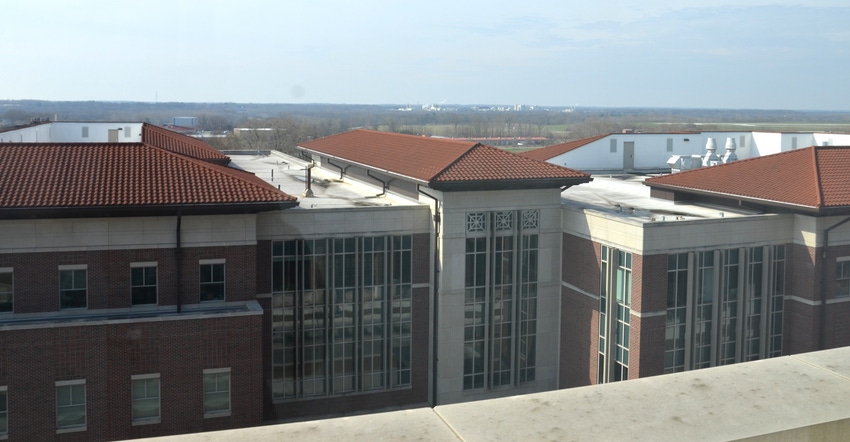May 2, 2022

If you graduated from Purdue University’s College of Agriculture in 2002 and returned today after a 20-year absence, you would be shocked. You would recognize some landmarks, including the Lilly Hall of Life Sciences and the Ag Administration Building. But where there were parking lots and green space before, there are buildings today.
And if you graduated in 1982 or before and haven’t been back to campus, a trip today may seem like landing on the moon. To be honest, a 2012 graduate might be puzzled by all the changes on the south side of State Street.
New since then is the animal sciences complex, adjacent to a new parking garage. Also new is the Agricultural and Biological Engineering Building. It may not look new at first glance since the original front section of the building was preserved. But rest assured, this complex, representing an investment of over $80 million, is not the ag engineering building where would-be ag teachers learned how to overhaul small engines in the 1970s.
Seeking payoff
That memory begs the question: What will today’s students reap from all these new buildings that earlier students couldn’t benefit from? I recently toured the new Ag and Biological Engineering Building, and the biggest advancement is more technology. It’s designed not only for today’s technology, but also so that it can adapt to future technology.
There’s a reason “biological” is included in the title for the new ag engineering building. It’s designed with three of six functional floors devoted largely to biological research, both for researchers on staff, postdoctoral researchers, masters and doctorate students, and to a lesser extent, undergraduate students. These floors would be better symbolized by a microscope and test tube than by a hammer and engine.
Obviously, the hope is that the work that goes on there in the future will lead to breakthroughs in technology, resulting in better plants and improved manufacturing and food-processing methods. Some labs aren’t yet fully occupied, but the process of equipping them is well underway.
Many of the new buildings that have changed the Purdue skyline were long overdue. Other changes are in motion, as the new Purdue Veterinary School complex works its way toward completion. Without that investment, Indiana could have soon lost its only accredited veterinary medicine school. With the growing need for large-animal vets, that loss could have been catastrophic for the entire state.
Ensuring payback
To make this large investment in buildings and equipment deliver a handsome return, two things must happen. Indiana, through Purdue, must continue investing in top-quality Extension and teaching staff to educate students and provide meaningful training to graduate students. Many have contended in the past that better facilities were needed to help students realize their full potential. The better facilities are here. Now it’s time to deliver on that promise.
Second, dollars must be available to staff the labs with researchers who can visualize what the future looks like, and then use equipment at their disposal to pursue it. The half of the new Ag and Biological Engineering Building devoted to research will only prove to be a good investment if it’s filled with dedicated people on fire to find new ways to do things better in agriculture.
Comments? Email [email protected].
You May Also Like




